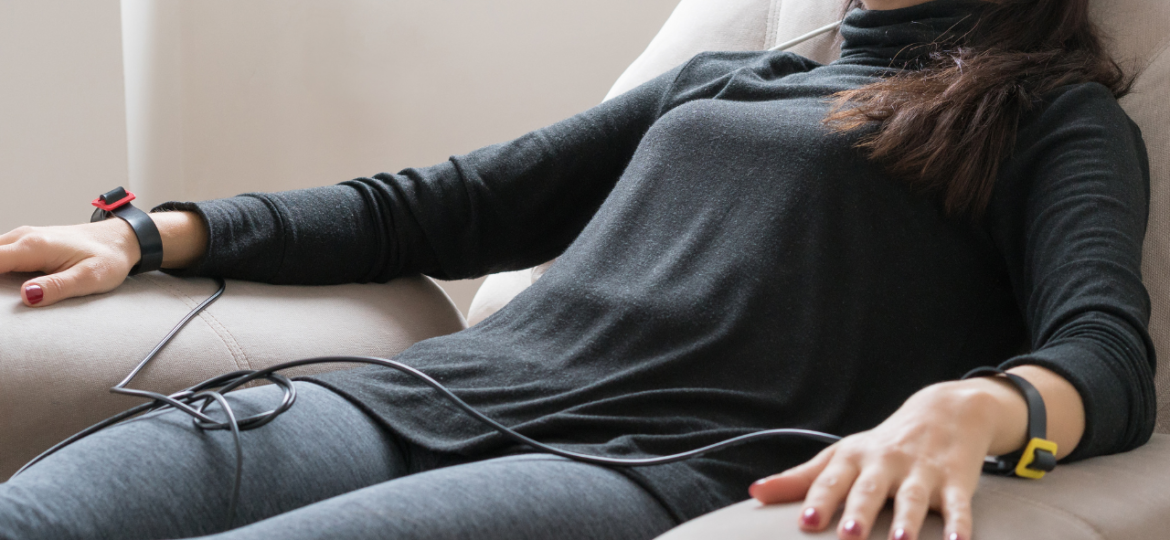
Biofeedback and Neurofeedback
Biofeedback and neurofeedback devices and programs are the next frontier for retraining our brain and body to work how we want them to work, instead of oftentimes working in ways we wish that they didn’t. This technology is advancing rapidly and as it does, it will become more and more accessible and effective.
I often use the analogy of picturing a tiny person getting pulled by a huge dog. It is clear who is walking who. This is how most people feel in relation to their mind. The mind seems out of control, having thoughts that are often untrue and decidedly unhelpful, yet people end up getting pulled around by them.
Similarly, our emotional responses, our feelings, often seem out of our control. our feelings are what they are and we often wish we could feel grateful or hopeful but we simply cannot access it. Fortunately, neurofeedback programs, which use advanced brain scan technology to train your brain in real-time, enable quicker rewiring than traditional practices like meditation and behavioral therapy. By participating in neurofeedback programs like 40 Years of Zen, working with Devon White and his team at The Field, or with Dr. Andrew Hill at Peak Brain Performance, clients are experiencing powerful, life-changing results. Being creative, understanding, grateful, and peaceful becomes easier and easier.
At-home devices like Muse, HeartMath, and Lief use biofeedback to give us access to simple ways to level up our mental and emotional self-awareness and responsibility. Muse is a meditation trainer that monitors your brainwaves and breathing to train you to relax your mind and HeartMath and Lief both use real-time Heart Rate Variability monitoring to teach you how to self-regulate and mindfully increase your HRV. And, there is a similar device for kids called Mightier! [COOL – ONCE AGAIN, READERS NEED TO BE ALERTED THAT THERE IS A LOT OF TECH]
Learning to regulate our HRV is learning to regulate our nervous system. Heart Rate Variability is the best metric we currently have to see how our body is handling our stress. MAKE SURE THIS IS EXPLAINED IN THE PREFACE/INTRO If our body is able to rest and recover in our parasympathetic nervous system, we expect to see a high HRV — there is a natural speeding up of our heart rate when we inhale and a natural slowing down of heart rate when we exhale. The more relaxed our system is, the more this will naturally vary. If our body is holding onto stress, we expect to see a lower HRV.
Researchers stress that it is a personal number and we want to look at trends over time, but as someone who has had a lower HRV since I began tracking it and working on optimizing, and as someone who has looked at the HRVs of hundreds of people including many younger people, I am confident in saying if we are someone who has a lower HRV, 30s or lower, we want to consider doing deeper trauma release work. Somatic therapy, breathwork therapy, and psychedelic therapy are all options to consider with the help of licensed professionals.
And, to support increasing HRV and overall mental wellness at home, there are many options available that are shown to retrain our brains to relax, using sound, light, and vibration. Listening to binaural beats, even better on a vibrational bed like Bioharmonica which has specially designed tracks to retrain the brain and body, much like NuCalm, Brain Tap, Huso, Apollo, Sensate are a few that I recommend trying. Everyone will have different responses at different times, I have found, so best to try for yourself and be your own citizen scientist. If you have access to a device to measure your HRV and brain states in real-time, such as with a wearable, you can easily see whether these sound, light, and/or vibration experiences have a positive impact on your system. At a minimum, notice and record how you feel, and how you sleep.
Curious about how this can impact your life? Schedule your complimentary coaching consultation now.

